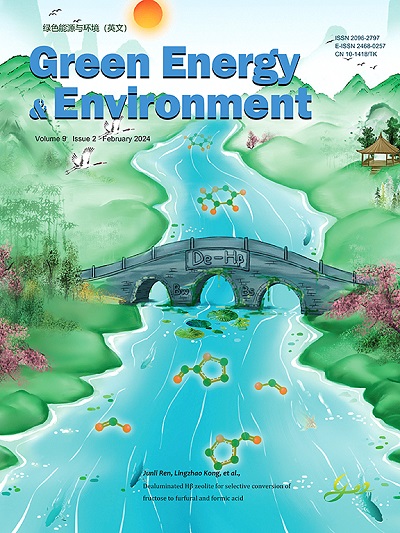Research on the application of defect engineering in the field of environmental catalysis
IF 14.6
1区 工程技术
Q1 CHEMISTRY, PHYSICAL
引用次数: 0
Abstract
Researchers have recently developed various surface engineering approaches to modify environmental catalysts and improve their catalytic activity. Defect engineering has proved to be one of the most promising modification methods. Constructing defects on the surface of catalytic materials can effectively modulate the coordination environment of the active sites, affecting and changing the electrons, geometry, and other important properties at the catalytic active sites, thus altering the catalytic activity of the catalysts. However, the conformational relationship between defects and catalytic activity remains to be clarified. This dissertation focuses on an overview of recent advances in defect engineering in environmental catalysis. Based on defining the classification of defects in catalytic materials, defect construction methods, and characterization techniques are summarized and discussed. Focusing on an overview of the characteristics of the role of defects in electrocatalytic, photocatalytic, and thermal catalytic reactions and the mechanism of catalytic reactions. An elaborate link is given between the reaction activity and the structure of catalyst defects. Finally, the existing challenges and possible future directions for the application of defect engineering in environmental catalysis are discussed, which are expected to guide the design and development of efficient environmental catalysts and mechanism studies.研究缺陷工程在环境催化领域的应用
最近,研究人员开发了各种表面工程方法来改性环境催化剂并提高其催化活性。事实证明,缺陷工程是最有前途的改性方法之一。在催化材料表面构建缺陷可以有效调节活性位点的配位环境,影响和改变催化活性位点的电子、几何形状和其他重要性质,从而改变催化剂的催化活性。然而,缺陷与催化活性之间的构象关系仍有待澄清。本论文重点概述了环境催化中缺陷工程的最新进展。在界定催化材料缺陷分类的基础上,总结并讨论了缺陷构建方法和表征技术。重点概述了缺陷在电催化、光催化和热催化反应中的作用特点以及催化反应机理。详细阐述了反应活性与催化剂缺陷结构之间的联系。最后,讨论了缺陷工程在环境催化中应用的现有挑战和未来可能的发展方向,这些挑战和方向有望指导高效环境催化剂的设计和开发以及机理研究。
本文章由计算机程序翻译,如有差异,请以英文原文为准。
求助全文
约1分钟内获得全文
求助全文
来源期刊

Green Energy & Environment
Energy-Renewable Energy, Sustainability and the Environment
CiteScore
16.80
自引率
3.80%
发文量
332
审稿时长
12 days
期刊介绍:
Green Energy & Environment (GEE) is an internationally recognized journal that undergoes a rigorous peer-review process. It focuses on interdisciplinary research related to green energy and the environment, covering a wide range of topics including biofuel and bioenergy, energy storage and networks, catalysis for sustainable processes, and materials for energy and the environment. GEE has a broad scope and encourages the submission of original and innovative research in both fundamental and engineering fields. Additionally, GEE serves as a platform for discussions, summaries, reviews, and previews of the impact of green energy on the eco-environment.
 求助内容:
求助内容: 应助结果提醒方式:
应助结果提醒方式:


